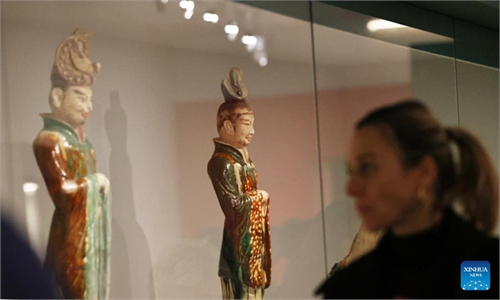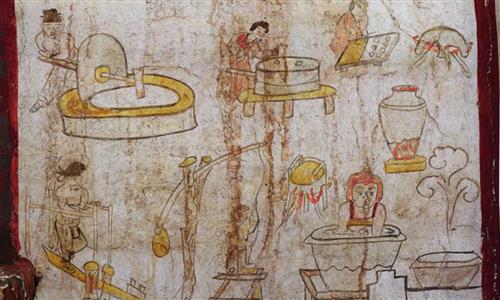ARTS / CULTURE & LEISURE
Tang Dynasty cemeteries for officials, civilians discovered in Xi’an
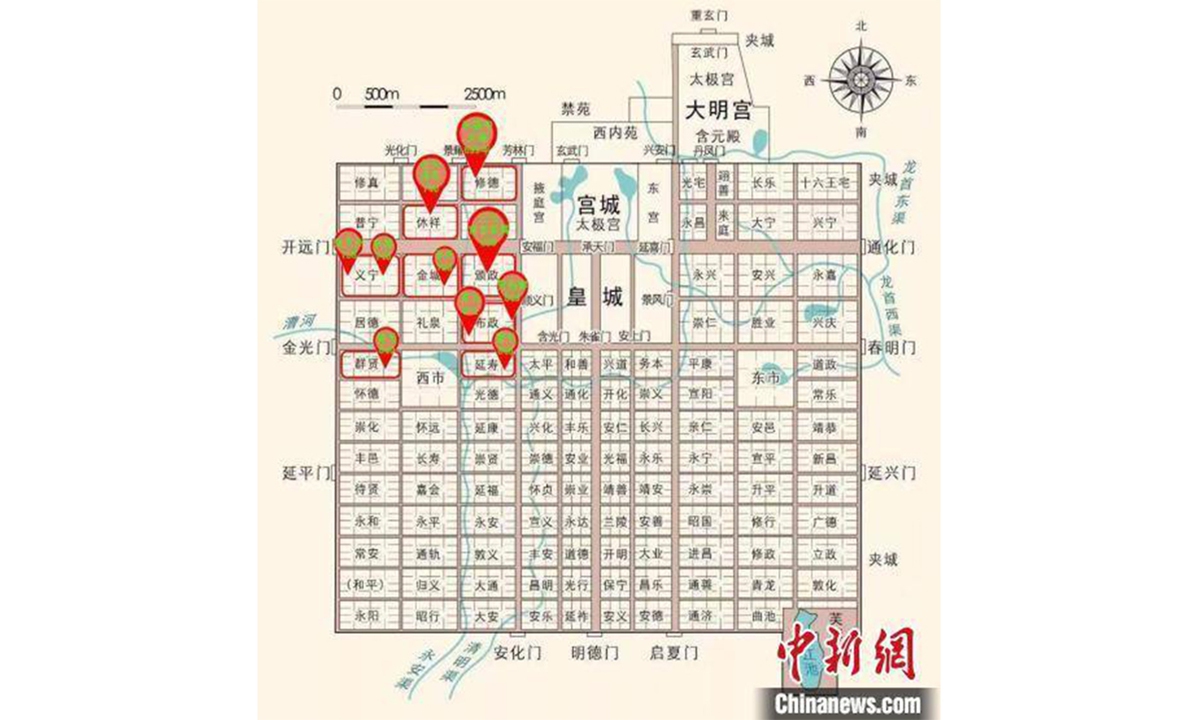
A map shows a neighborhood where the owners of the tombs lived. Photos: Courtesy of Xi'an Institute of Cultural Relics Protection and Archaeology
Public cemeteries for middle- and low-level officials and civilians dating back to the Tang Dynasty (618-907) have been discovered in Xi'an, Northwest China's Shaanxi Province. The unearthed cemeteries provide new materials for the study of the distribution, clan affiliation and burial relationships of small- and medium-sized Tang tombs, the Xi'an Institute of Cultural Relics Protection and Archaeology announced on Saturday.
Experts say the relics are a testament to the cultural blending of the Tang Dynasty as well as the core technology of block printing.
From November 2023 to December 2024, archaeologists with the Xi'an Institute of Cultural Relics Protection and Archaeology conducted archaeological excavations at the cemeteries around a pharmaceutical factory in the Lianhu district of Xi'an,which was once part of the western suburbs of the ancient city of Chang'an. The discovery of a number of small- and medium-sized tombs from the Tang Dynasty among these cemeteries and Dharani sutras and mantras are important gains from this excavation.
Guo Yongqi, the team leader for the excavation, told the Global Times on Sunday that according to epitaphs with clear dates, the area was used as a public cemetery for at least 231 years, starting in the 14th year of Zhenguan (640) and going to as late as the 12th year of Xiantong (871).
The owners of the tombs were middle- and low-level officials and civilians who lived near what was the northwest corner of Chang'an (the ancient name for Xi'an). They include military generals, governors, monks, eunuchs' families, and other citizens.
During their lifetimes, they lived in different neighborhoods and other places nearby the city's Western Market.
Ran Wanli, a professor from the School of Cultural Heritage at Northwest University, told the Global Times on Sunday that in addition to the officials and civilians, the tombs can show that among the neighborhoods of Yining Fang, Buzheng Fang and other areas, there also lived Sogdian and Persian residents from Central and West Asia. Their burial places were also be discovered in the excavation area, which shows that their lifestyle and funeral customs were influenced by Tang Dynasty culture.
"It can be seen that the highly developed Tang culture was very open and inclusive. It had an important influence on world culture and was admired by residents of neighboring countries. Some foreign people came to China. Later, they were integrated into Tang culture," said Ran.
Additionally, the archaeologists also discovered more than 100 vertical earth pit tombs for minors, all of which were buried in tile coffins. These discoveries provide physical data for further research on the distribution of minors' cemeteries in the Tang Dynasty.
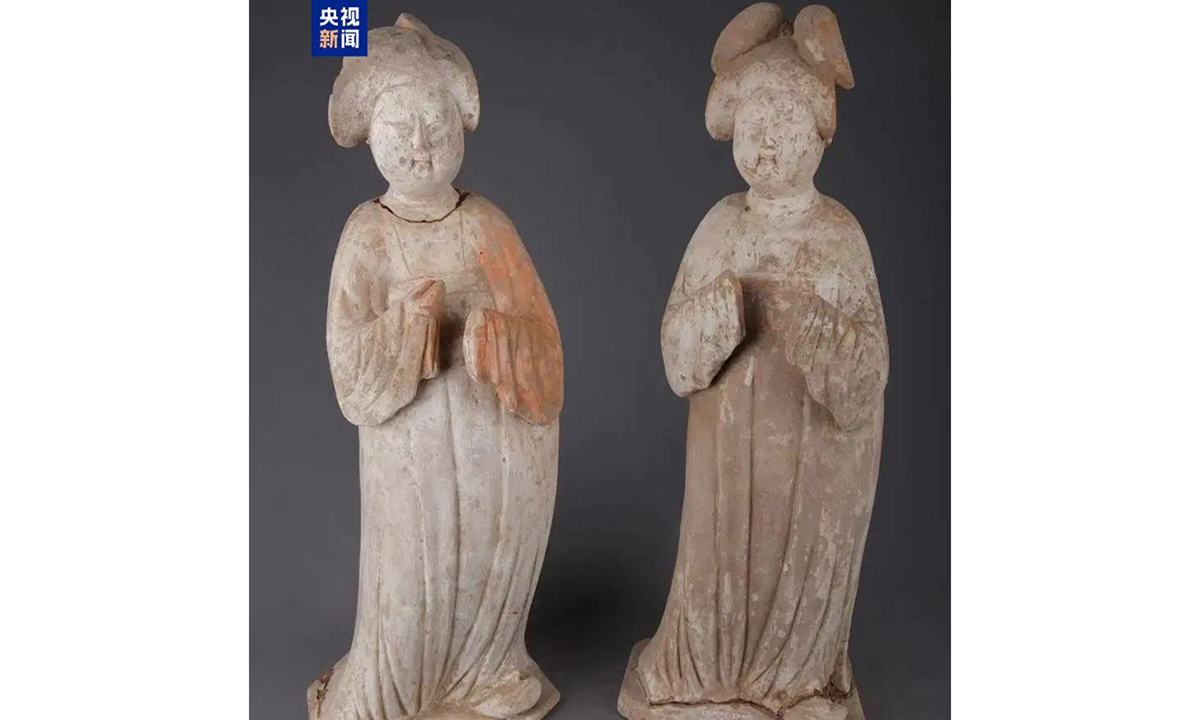
Two unearthed maid figurines
A total of more than 4,000 relics were unearthed from the Tang cemeteries, with pottery accounting for about 69 percent of the findings. These items can be divided into two categories: household utensils (including tower jars, deep-belly jars) and pottery figurines.Among them, the two unearthed paper prints combined with the Bundharani Sutra and Mantra are of great significance to the study of the spread of Buddhism in the Tang Dynasty and the inference of the age of woodblock printing.
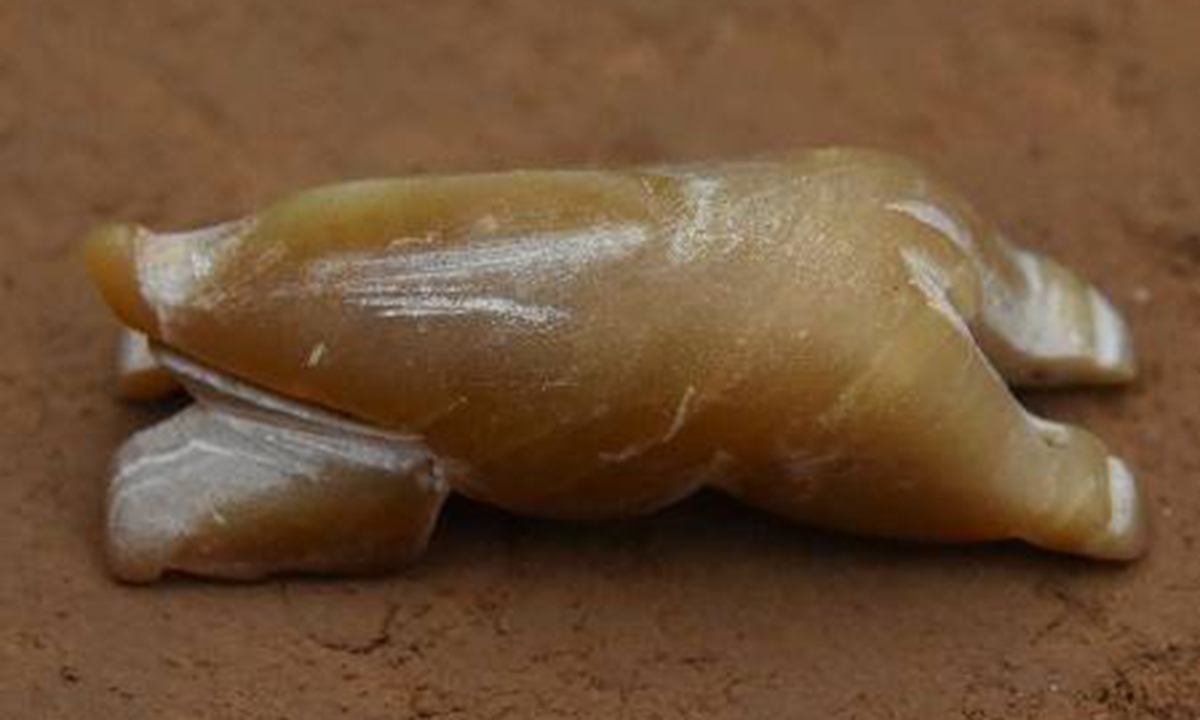
An unearthed jade grip
"The woodblock prints unearthed this time may be the earliest domestic woodblock printed artifacts," Ran said.
"As the core technology of the time, the invention of woodblock printing played a huge role in promoting the progress of world civilization," Ran stressed.
Meanwhile, the discovery of the stone scale is of great significance to the study of the weights and measure standards of the Tang Dynasty, Guo said.
